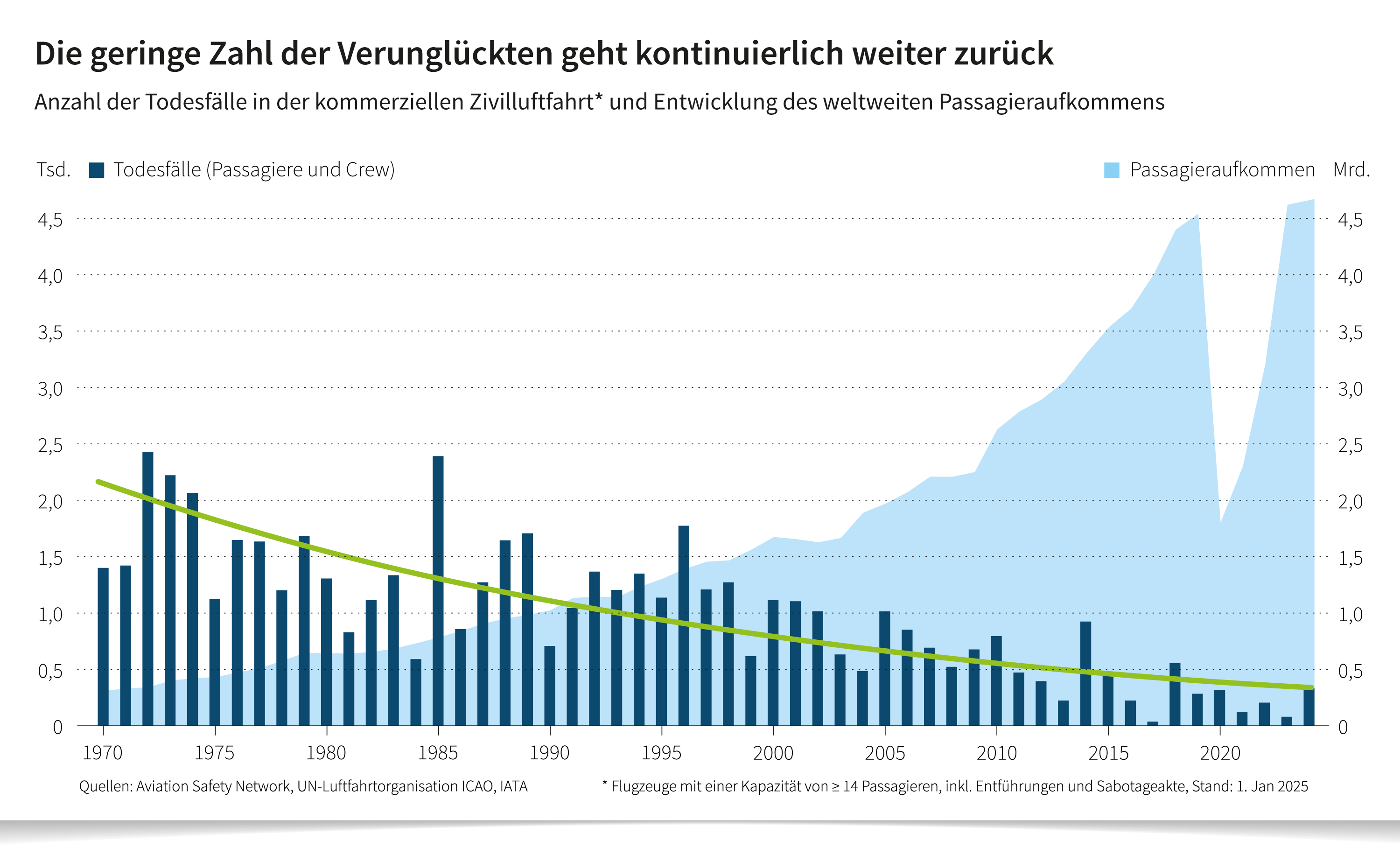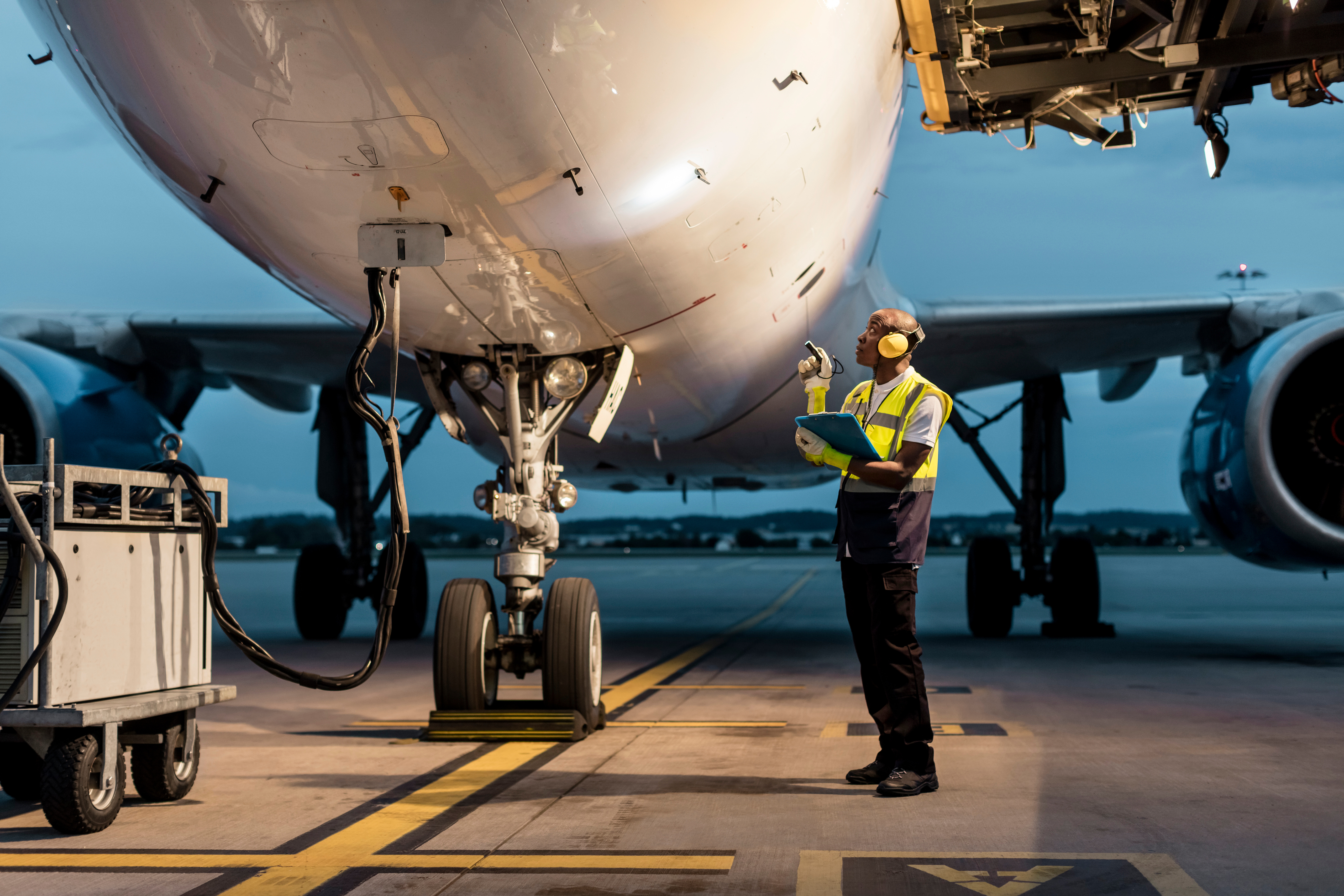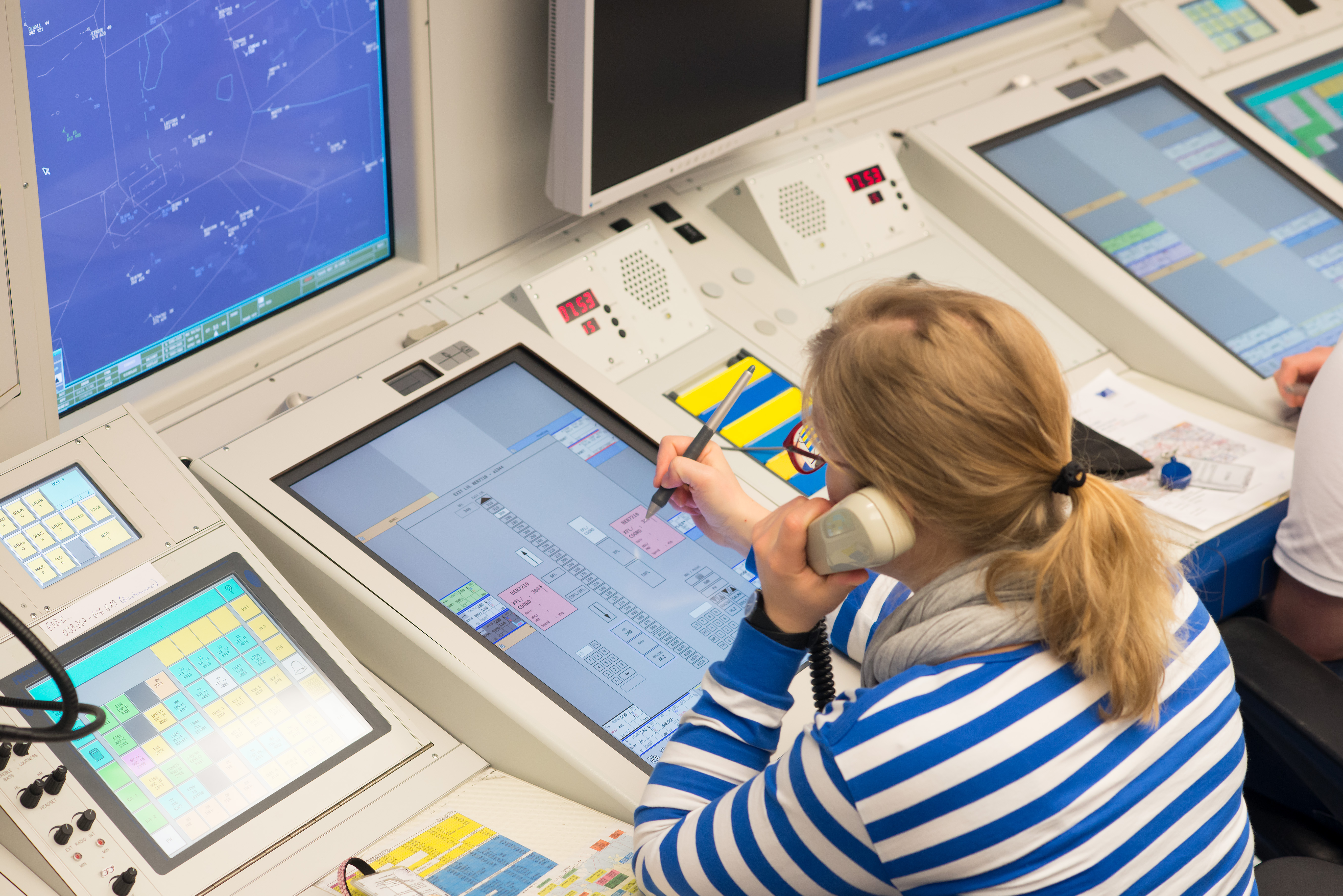Safety in Air Traffic.
Safety is at the heart of civil aviation – from aircraft construction to ongoing operational monitoring. Despite rising passenger numbers, the number of fatal accidents has steadily declined over the past decades. This shows: flying today is safer than ever before.
How safe is flying?
Flying evokes mixed feelings in many people: the fascination with technology and speed often comes with a queasy feeling about potential risks. However, a look at the development of aviation shows that these concerns are, in most cases, unfounded. The international aviation industry continuously invests in safety—through cutting-edge technology, strict maintenance regulations, and comprehensive staff training.
Despite isolated tragic incidents, the statistical safety of flying is impressive: in 2024, the likelihood of a fatal accident was 1 in 13.97 million—making it 53 times safer than in the 1970s. Statistically, the global air travel accident rate has significantly decreased over the past decades—despite a growing number of passengers and over 40 million flights per year.
If flying were as risky today as it was in the 1970s, there would be nearly 19,000 fatalities per year on average — the equivalent of two Airbus A320 crashes every week.
In 2024, civil aviation worldwide recorded 17 accidents with 334 fatalities — including seven people on the ground. This tally does not include accidents involving military aircraft or smaller planes with fewer than 14 passenger seats. In Germany, not a single aviation accident occurred. The most serious incident involved a Jeju Air aircraft in South Korea.

Aviation Safety Systems
Today, airplanes are among the safest means of transportation in the world. This is made possible by a combination of cutting-edge technology, strict regulations, and international cooperation. From aircraft design to airspace monitoring, safety measures are seamlessly integrated at every level. A distinction is made between operational safety and airport procedures (safety), and protection against external threats and attacks (security).
Aircraft Construction & Technology
Modern aircraft are equipped with functional redundancies, meaning safety-critical systems are designed in parallel so that if one component fails, another can take over. Manufacturers develop comprehensive maintenance protocols, which are regularly reviewed and approved by regulatory authorities. Ongoing technological advancements also make aircraft more resilient to malfunctions.

Personal & Ausbildung
Zuverlässigkeit und strenge, fundierte Ausbildungen sind oberste Gebote. Alle Mitarbeitenden im Sicherheitsbereich müssen spezielle Prüfungen durchlaufen. Piloten, Flugbegleiter und weiteres Personal absolvieren kontinuierlich Trainings und medizinische Checks. Klare gesetzliche Vorgaben regeln Dienst- und Ruhezeiten.
Überwachung
Luftsicherheit kennt keine Grenzen. Die UN-Luftfahrtorganisation ICAO legt globale Standards fest. In Europa überwacht die europäische Luftsicherheitsbehörde EASA, in Deutschland das Luftfahrt-Bundesamt (LBA) sowie die Luftsicherheitsbehörden der Länder die Einhaltung dieser Vorgaben durch regelmäßige Audits. Die Unternehmen verfügen über Safety-Management-Systeme, die Verfahren intern auf ihre Wirksamkeit überwachen.
Flughafensicherheit & Kontrollen
Sicherheitsbereiche an Flughäfen sind streng gesichert. Gepäck und Personen durchlaufen flächendeckend Kontrollen auf gefährliche Gegenstände. Einheitliche Anforderungen an Technik und Personal garantieren bundesweit hohe Sicherheitsstandards.
Airspace Monitoring & Air Traffic Control
Air traffic controllers monitor all flights from takeoff to landing, ensuring that aircraft maintain a safe distance from one another throughout the entire flight. To achieve this, air traffic control operates a wide range of technical systems for tracking, navigation, and communication. Pilots follow the precise instructions of controllers to ensure smooth and safe air traffic operations.

Accident Analysis & Safety Culture
In aviation, every accident, near miss, and irregularity is reported and thoroughly investigated. Once the causes are identified, appropriate conclusions are drawn. The concept of “Just Culture” focuses not on assigning blame, but on preventing repeated mistakes. The insights gained are directly used to implement new measures that enhance aviation safety. This effective safety culture helps to continuously improve air travel safety and maintain a high level of security.
Current Challenges
New technologies such as drones and increasing cyber threats require constant advancement of security measures. Growing geopolitical tensions and crises have fueled hybrid attacks such as jamming (disruption of GPS signals) and spoofing (sending falsified data to the cockpit). Aviation companies and authorities are working together to develop solutions to counter such targeted attacks and to ensure the highest safety standards in the future. One of the key challenges in the coming years will also be the intensification of civil-military cooperation in aviation.
Feel free to contact us …
 Carola Scheffler
Press Spokesperson
carola.scheffler(at)bdl.aero
+49 30 520077-117
Carola Scheffler
Press Spokesperson
carola.scheffler(at)bdl.aero
+49 30 520077-117
 Frank Penner
Head of Operations, Engineering and Safety
frank.penner(at)bdl.aero
+49 30 520 077-170
Frank Penner
Head of Operations, Engineering and Safety
frank.penner(at)bdl.aero
+49 30 520 077-170


